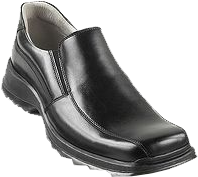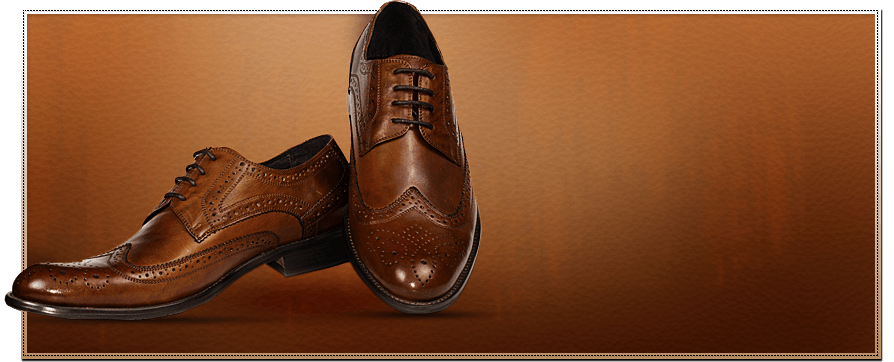Shoe Care: 7 steps to longer life
- Step 1
- Step 2
- Step 3
- Step 4
- Step 5
- Step 6
- Step 7

Always use a shoe horn
This will prevent the counters from crushing, which is a molded material (similar to fiberglass). Its purpose is to shape and support the heel. Shoehorns also protect the heel linings from unnecessary abuse.

Polish
Always keep a fresh coat of polish, cream, or moisturizer on your footwear. Even our hands tend to dry and crack when exposed to excess moisture. Think of leather in the same way, except leather no longer has the ability to produce natural oils, which would otherwise keep it moist and supple. Cream polish will penetrate deeper into the grain of leather, while wax tends to coat the surface, lasting longer with a brighter shine. We recommend cream for softer leather and wax for more ridged leather. Polish should be applied when the leather begins to look dull or feels dry to the touch. Eventually, you may begin to see a streaking, flaking, or blotchiness on the upper. This means the polish has clogged the pores of the leather and caked. Remedy: An application of polish remover then simply reapply a fresh coat of polish.

Waterproof
We always recommend an application of waterproof spray to new footwear. This is just an added protection for leather and helps prevent water damage and salt stains. Do not use a silicone-based product on high grade footwear. This tends to darken light to mid-tone leathers and leaves an oily residue which interferes with the ability of the leather to shine well. Proper sequence: waterproof, then shine. Waterproofing is recommended every 4th to 8th shine depending on weather conditions. The damper the weather is, the more frequent the application.

Sole guard
This is a thin protective rubber sole which is applied to the top of the existing sole to prevent it from wearing out. It also protects the stitching on the soles as well as being nonskid and waterproof. Sole guards also slightly cushion the walk. If applied properly, sole guards can barely be noticed from the side of the shoe. They are the approximate thickness of a penny and in most cases, will actually outlast the factory or replacement sole. They are also much less expensive to replace. For best results, sole guards should be applied to new or firm soles. Do not use them if your soles are already 'spongy' or soft.

Shoe trees (cedar only)
Cedar wood has an appealing aroma and is very dry in nature. This helps absorb any moisture in the shoe from perspiration or rain seepage. Shoe trees should be installed immediately after removing your shoes; they should dry naturally and not be left near any heat, The trees will also insure that your shoes will dry to their original shape and will help protect the lining as well as the uppers. Always alternate your footwear at least every other day to allow the trees to settle inside your shoes and absorb even the slightest moisture before wearing them again. Never use shoetrees made of plastic material or shellacked wood. Instead of absorbing moisture, those materials will actually drive the moisture back into the liner, which will lead to a premature deterioration of the leather.

Galoshes
Always wear them in inclement weather. The object is to keep the leather as dry as possible, and restore the oils with creams and polish on occasion. If you follow these few maintenance procedures, you will be pleasantly surprised at how much life your expensive shoes will have in them.

How to check for wear
Heels: If you look from the side of the heel, you can see the toplift. Follow the seam between the toplift and base to the rear outside border of the heel. When you are down to the thickness of a dime in that area, it is time for new heels, and you have avoided damage to the base. If you wait until you see the light-colored base at the rear outside borders of the heels, you are causing unnecessary damage to the base.
Soles: Do not wait until you see a hole. In many cases, if you turn the shoe upside down you will see wear in a circular shape. In other cases, you may not see the wear, but try pressing the center of the sole with your thumb. If you feel weakness or sponginess, it is time to replace the sole and you haven't caused unnecessary damage to any other components of the shoe (such as welts, insoles, or sock liners).



 Hours
Hours